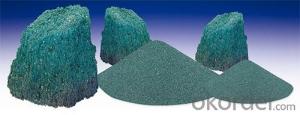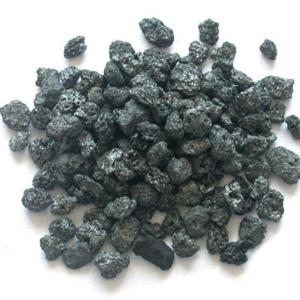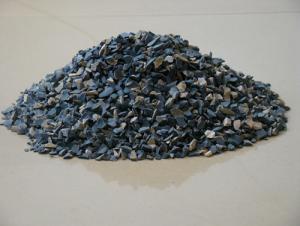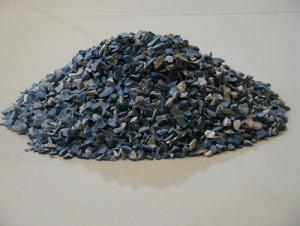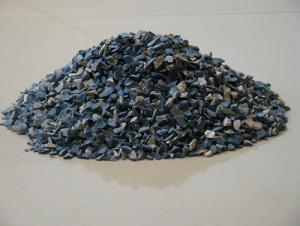Refractory Silicon Carbide Support (pillar) & Parts for Kiln Furniture
- Loading Port:
- China main port
- Payment Terms:
- TT OR LC
- Min Order Qty:
- 25 m.t.
- Supply Capability:
- 2000 m.t./month
OKorder Service Pledge
OKorder Financial Service
You Might Also Like
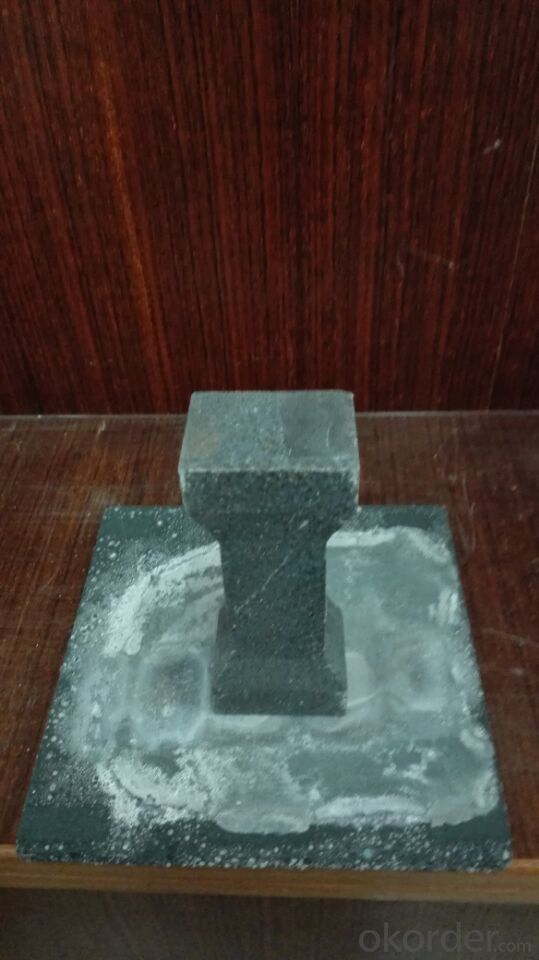
Reaction Bonded Silicon Carbide for Kiln Furniture and Support Component
- The high temperature strength, oxidation resistance and thermal shock resistance of Reaction Bonded SiC enables the manufacturer of low mass kiln supports. Kiln products include thin walled beams, posts, setters, burner nozzles and rolls. The components lower the thermal mass of kiln cars, result in energy savings and provide the possibility for faster product throughput.
Silicon Carbide SiC Features:
Superior Resistance to wear
Resistance to corrosion; the material tolerates a wide range of acids and alkalis
Resistance to oxidation
Abrasion / Corrosion resistance
Excellent thermal shock characteristics
Strength at high temperature up to 1380°C
Good dimensional control of complex shapesSilicon Carbide SiC Benefits:
Excellent oxidation resistance
Improved performance
Longer life between replacement / rebuilds
High thermal conductivity
Silicon Carbide SiC Specifications:
ITEM: | UNIT: | DATA: |
Temperature | Celsius | 1450 c |
Density | g/cm³ | 3.1 – 3.2 |
Open porosity | % | ≤1.56 – 1.66 |
Bending strength | MPa | 250 ( 20 c ) |
MPa | 280 ( 1200 c ) | |
Modulus of elasticity | GPa | 330 ( 20 c ) |
GPa | 300 ( 1200 c ) | |
Thermal conductivity | W/m.k | 45 ( 1200 c ) |
Coefficient of thermal expansion | K-1 x 10-6 | 4.5 |
Rigidity | 13 | |
Acid proof alkaline | Excellent |
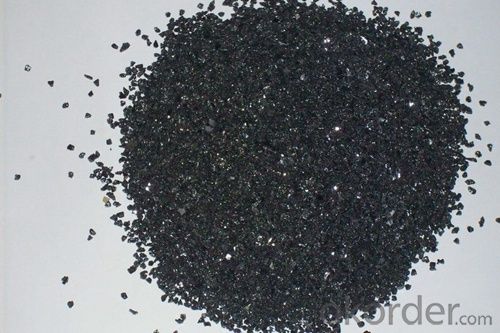
- Q:Can the teflon material resist fire?
- Teflon does not burn and with the ability of flame retardant.
- Q:What's the feature of construction external wall fireproof and thermal inuslation matertial?
- It has properties of low heat conductivity coefficient, low density, high flexibility, fireproof and waterproof. Its heat conductivity coefficient at normal temperature is 0.018W / (K · m) . The thermal insulation property is three to eight times that of the traditional materials. And it is completely waterproof. [2] Thermal insulation lining has properties of low heat conductivity coefficient, low density, high flexibility, fireproof and waterproof. Light, generally about10-96kg / m3, 20kg / m3 or less is felt, 24-48kg / m3 is middle-hard plate, 48-96kg / m3 is hard plate, wherein 48kg / m? can be used as ceiling, with softening point being 500 ° C , thermal insulation 300 ° C. It is widely used in the United States, k =0.9. Calcium silicate thermal insulation product is developed in 1970s in China. With high compressive?strength, low heat conductivity coefficient, recycle and easily construction, it is widely used in the power system. In China, small workshop?production were the most common, then four production lines were gradually introduced from America, including instant fiber forming, dry method punched felt, which are advanced and quality, temperature endurance up to 800-1250 ° C.
- Q:What are the use of fire-resistant material and admixture?
- Generally speaking, there are several admixtures: 1. Water reducing agent. It can ensure basic refractory castable flow value and significantly reduce its water mixing amount sodium hexametaphosphate and sodium tripolyphosphate 2. Plasticizer. It can increase plastic refractory mixture and enhance the ability of bentonite clay mud material stress strain 3. Gelling agent. It can make the colloidal solution (or suspending liquid containing solid particles condensed gelling agent 4. Dispergator. It can turn condensation or reunion colloidal particles (particles) into sol or uniform dispersion suspended particles and make the thick colloid free stream sol said scattered coagulant peptizer 5. Coagulant. It can shorten the stereotypes refractories condense sclerosis NaOH Mars between aluminum hydroxide, etc. 6. Retarder. It can delay the stereotypes refractories condense sclerosis between citric acid tartaric acid, etc. 7. Delayed coagulant. It can make setting fire-resistant materials contain binder by set out the condensation hardening effect between calcium aluminate cement, etc. 8. Foaming agent. It can reduce the liquid surface of power to produce uniform stability as rosin soap bubble resin fat saponin and so on. 9. Antifoaming agent. It can make fast setting fire-resistant material mixing or shock in produce bubbles escape alcohol fatty acids, such as 10. Shrink agent can reduce or prevent the refractory materials used to produce contraction type heating said silicon powder stabilizer or volume expansion agent, etc. 11. Preservative. It can keep setting fire-resistant material stored on construction performance change or change oxalic acid citric acid, etc. 12. Inhibitors. It can inhibit stereotypes refractories ingredients contain iron or iron compounds and acidic reaction caused inflation to produce hydrogen bond CrO3 diacetone alcohol, etc. I hope it can help you.
- Q:How to choose refractory material
- Refractory fiber in different furnace material requirements are different, I would like to know is methanol as a protective gas, fire fiber, cotton material what?.
- Q:what's the classification of fireproof materials?
- Fireproof materials are used in construction, in various forms and it has played an absolute role in modern fireproofing, common fireproofing materials include fireproof?panel, fire door, fireproofing glass, fire?retardant?coating, fireproof bag,etc Or the material itself has a high temperature resistance, heat-resistant, flame-retardant properties. Most of them are used for the construction industry.
- Q:What is the use of refractory?
- It is used as a protective layer inside the high-temperature, high-corrosion, high-washing, easy to be wore equipment and as an insulation layer outside equipment.
- Q:What's the classification of refractory material?
- Magnesium aluminum is complex and mainly seeing what classification standard is like according to the appearance shape can be divided into two categories, setting and not setting according to the acid alkali can be divided into acidic, magnesia, high aluminum, ramming expected, spinel, spray coating, plastic, just the quality of the jade, daub material according to the chemical composition is divided into, such as clay, neutral and alkaline according to the operation mode can be divided into different castable, magnesium, calcium, magnesium chrome
- Q:What kinds of refractory will be used in kiln of sintering ceramics?
- Porcelain has many classes, including acid, alkaline and neutral materials.
- Q:What are the additives and recipes of refractory?
- You can try FDN.
- Q:What's the fireproof specification for constrcution external wall thermal insulation materials?
- incombustible material: Class A1 (homogenous): such as YT inorganic active insulation material for wall thermal, foam glass, rock(ORE) wool, glass wool, insulation?board of aerogel,expanded perlite series, expaned glazed hollow bead, foam insulation boards, ETC. Class A2 (non-homogeneous composite): such as phenolic foam, gelatine powder polyphenyl granule thermal insulation material, inorganic coating materials and other nonflammable material. phenolic foam insulation board, urea resin foam and board, high flame-retardant polyurethane rigid foam and board, high flame retardant polystyrene cystosepiment, gelatine powder polyphenyl granule heat insulating slurry and other combustible?materials. Requirements for combustion levels of common antiflaming EPS, common inflaming retarding XPS, common antiflaming rigid PU foam board: Class A is incombustible?material (product); B1 nonflammable material (product); B2 combustible?material (product); B3 combustible material (product).
1. Manufacturer Overview |
|
|---|---|
| Location | |
| Year Established | |
| Annual Output Value | |
| Main Markets | |
| Company Certifications | |
2. Manufacturer Certificates |
|
|---|---|
| a) Certification Name | |
| Range | |
| Reference | |
| Validity Period | |
3. Manufacturer Capability |
|
|---|---|
| a)Trade Capacity | |
| Nearest Port | |
| Export Percentage | |
| No.of Employees in Trade Department | |
| Language Spoken: | |
| b)Factory Information | |
| Factory Size: | |
| No. of Production Lines | |
| Contract Manufacturing | |
| Product Price Range | |
Send your message to us
Refractory Silicon Carbide Support (pillar) & Parts for Kiln Furniture
- Loading Port:
- China main port
- Payment Terms:
- TT OR LC
- Min Order Qty:
- 25 m.t.
- Supply Capability:
- 2000 m.t./month
OKorder Service Pledge
OKorder Financial Service
Similar products
New products
Hot products
Related keywords
